Example of Acutual Model for Elastic Static Analysis
Actual Model Examples for Elastic Static Analysis
Analysis Model
A list of actual model verification examples for elastic static analysis are presented in Table 9.2.1. The different shapes of the models are shown in Figs. 9.2.1–9.2.5 (some models are excluded). The examples of the element types 731 and 741 require a separate direct method solver.
| Case name | Element type | Verification model | Number of nodes | Freedom freequency |
|---|---|---|---|---|
| EX01A | 342 | Connecting rod (100,000 nodes) | 94,074 | 282,222 |
| EX01B | 342 | Connecting rod (330,000 nodes) | 331,142 | 993,426 |
| EX02 | 361 | Block with hole | 37,386 | 112,158 |
| EX03 | 342 | Turbine blade | 10,095 | 30,285 |
| EX04 | 741 | Cylindrical shell | 10,100 | 60,600 |
| EX05A | 731 | Wine glass (coarse) | 7,240 | 43,440 |
| EX05B | 731 | Wine glass (midium) | 48,803 | 292,818 |
| EX05C | 731 | Wine glass (fine) | 100,602 | 603,612 |
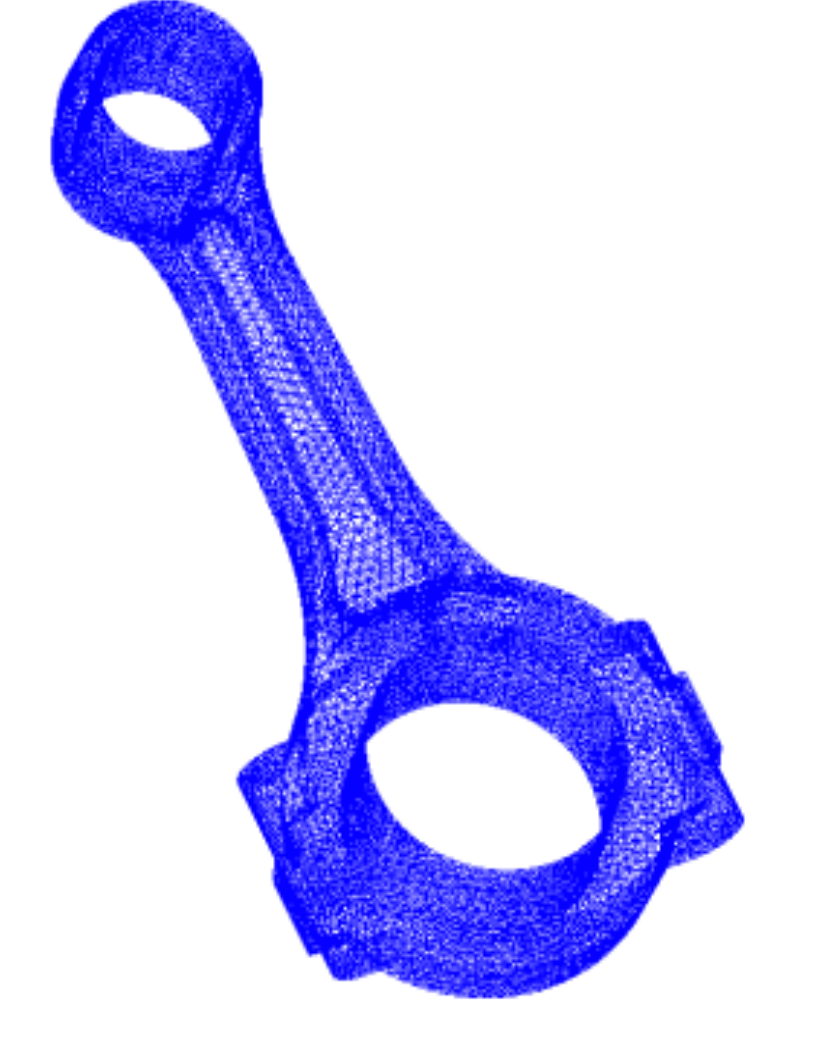
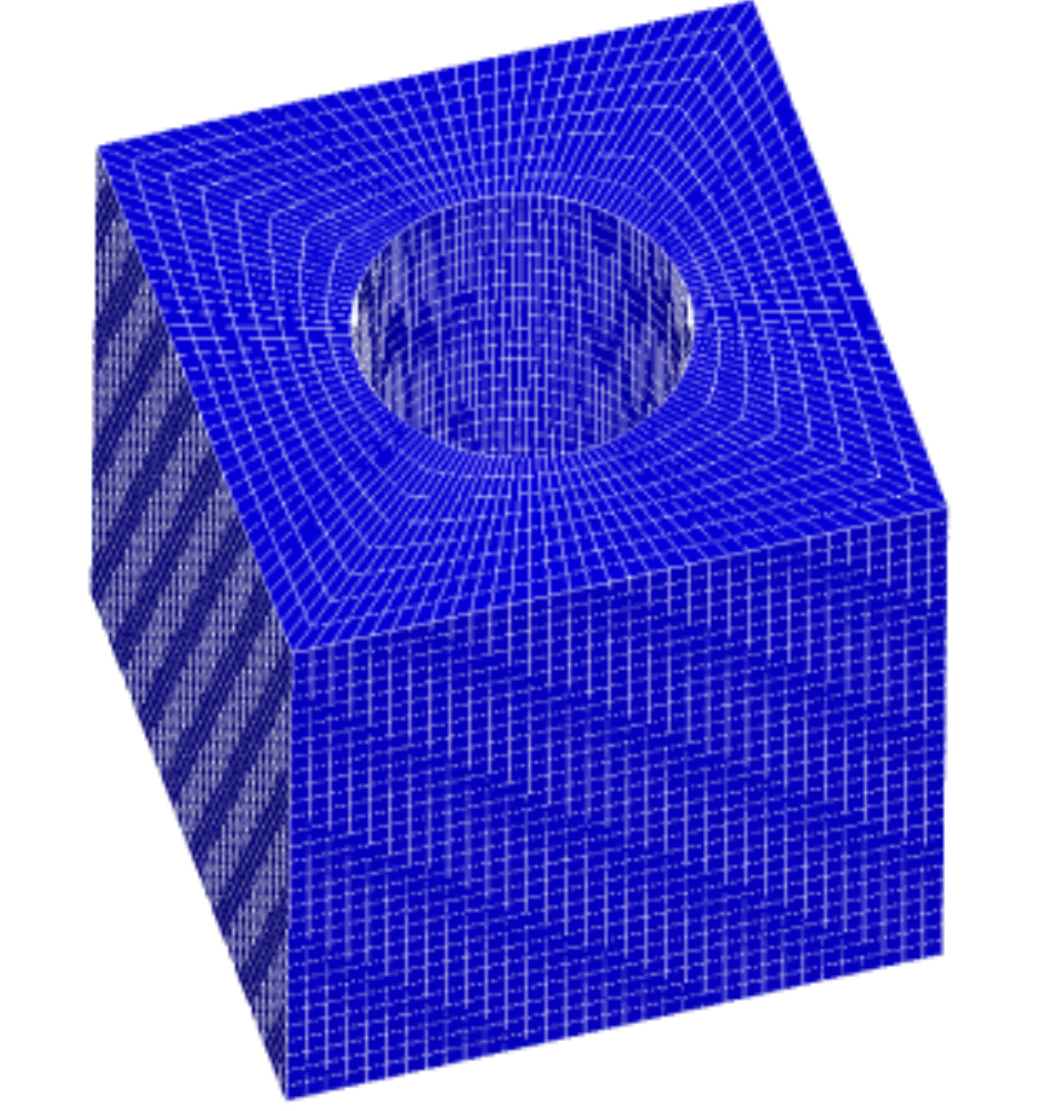
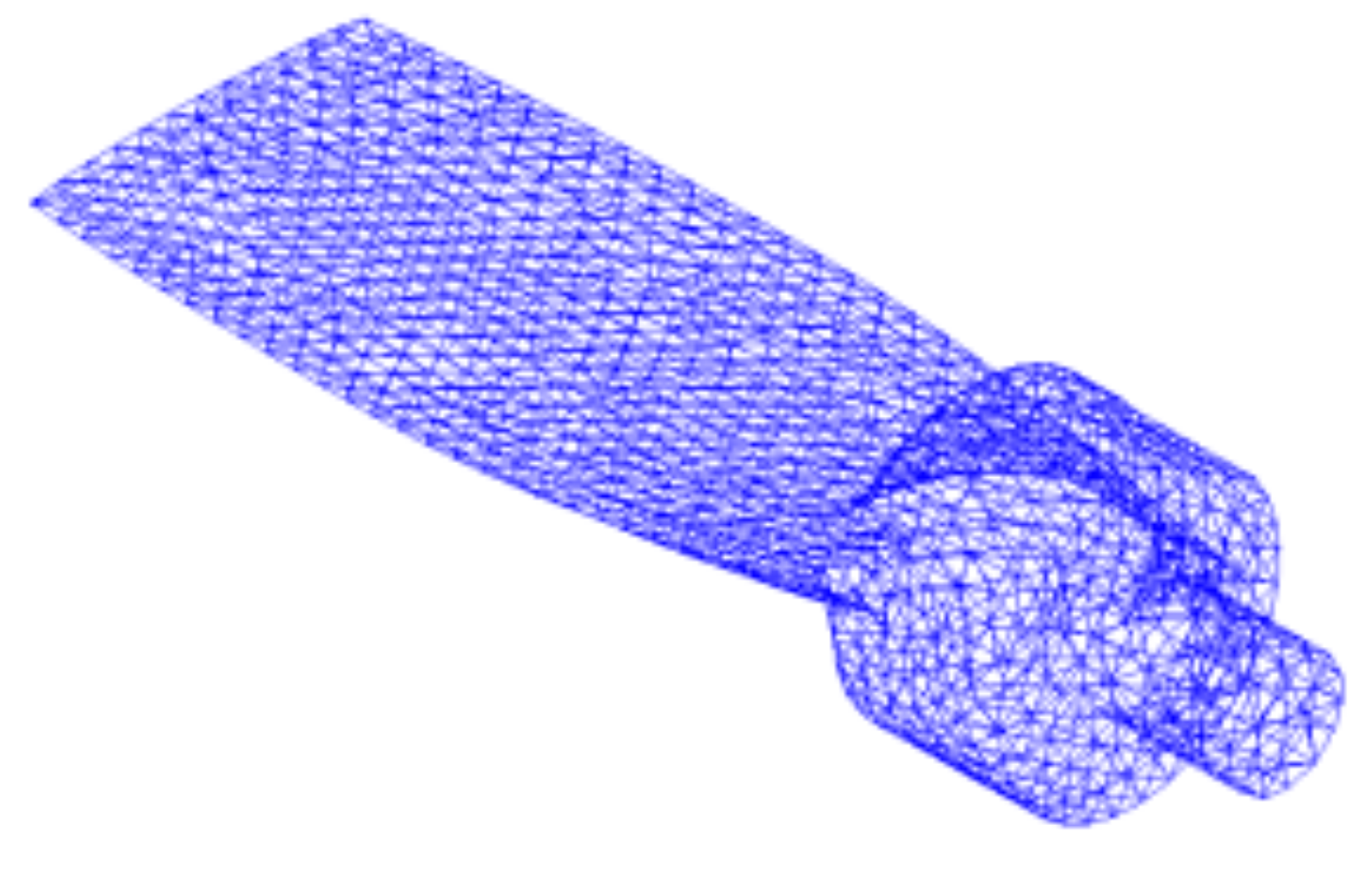
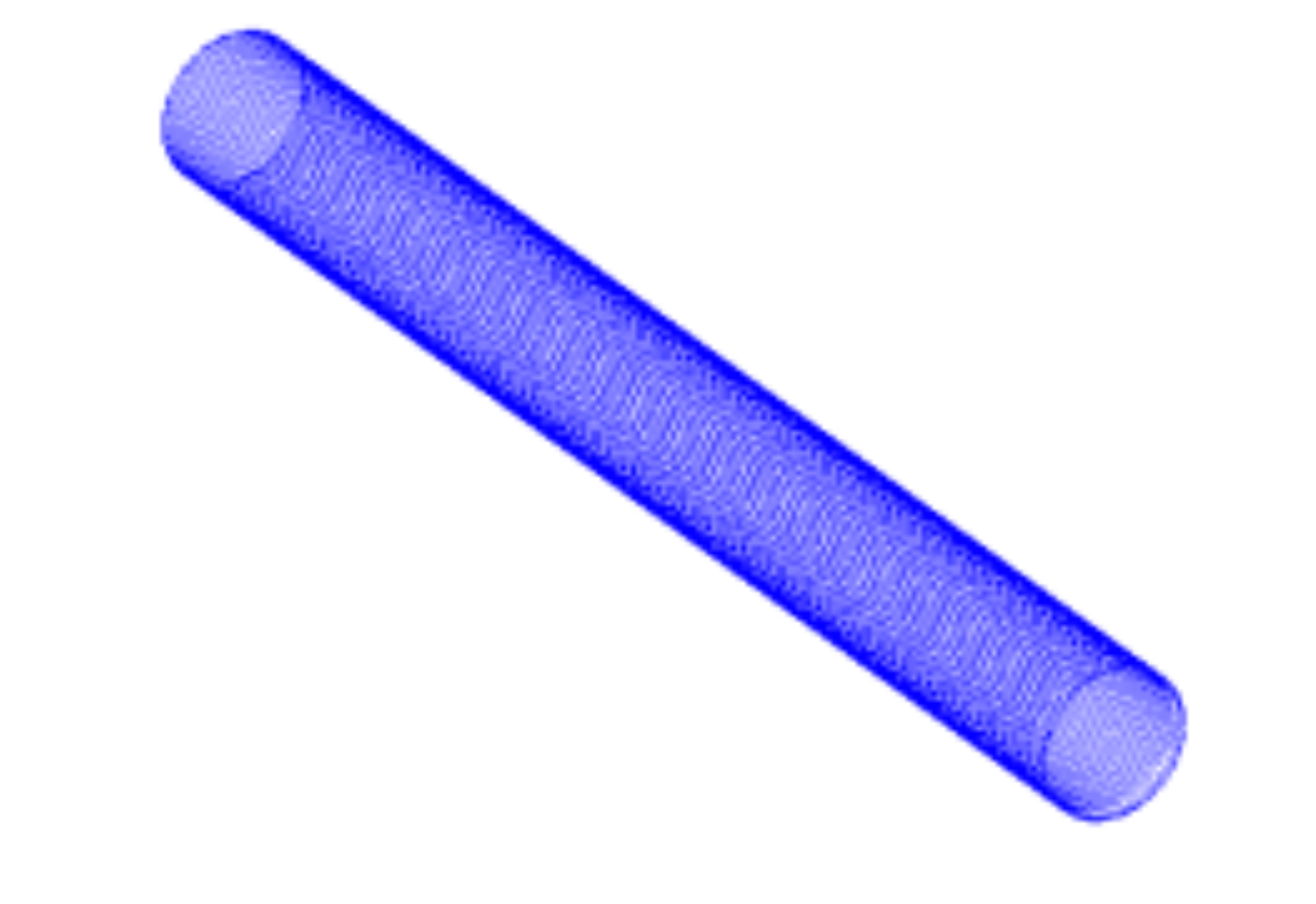
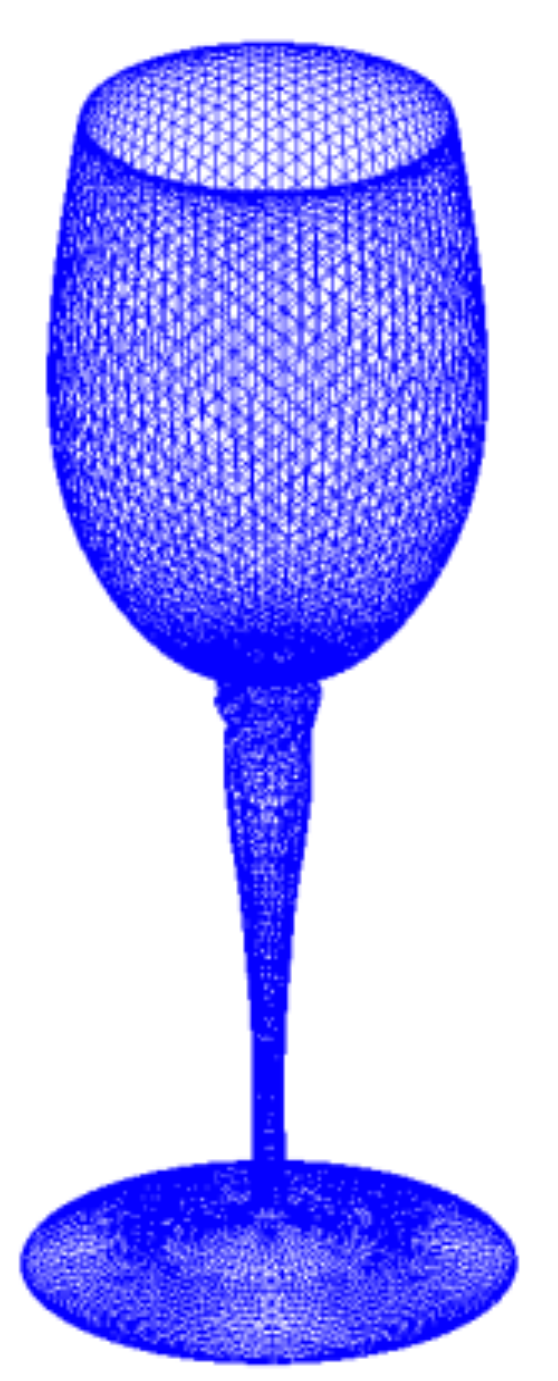
Analysis results
Example of analysis results
Examples of the analysis results are shown in Figs. 9.2.6–9.2.9.
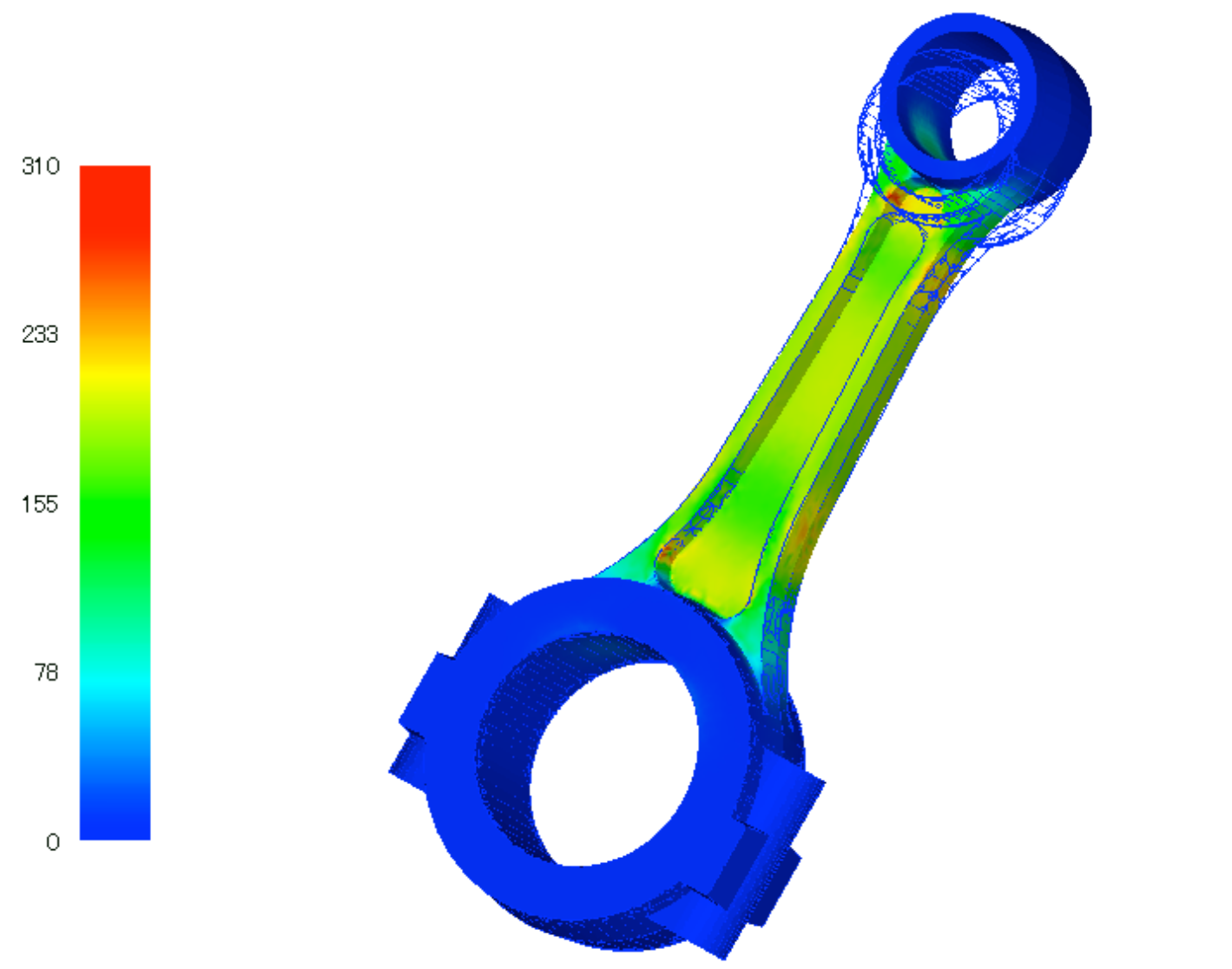
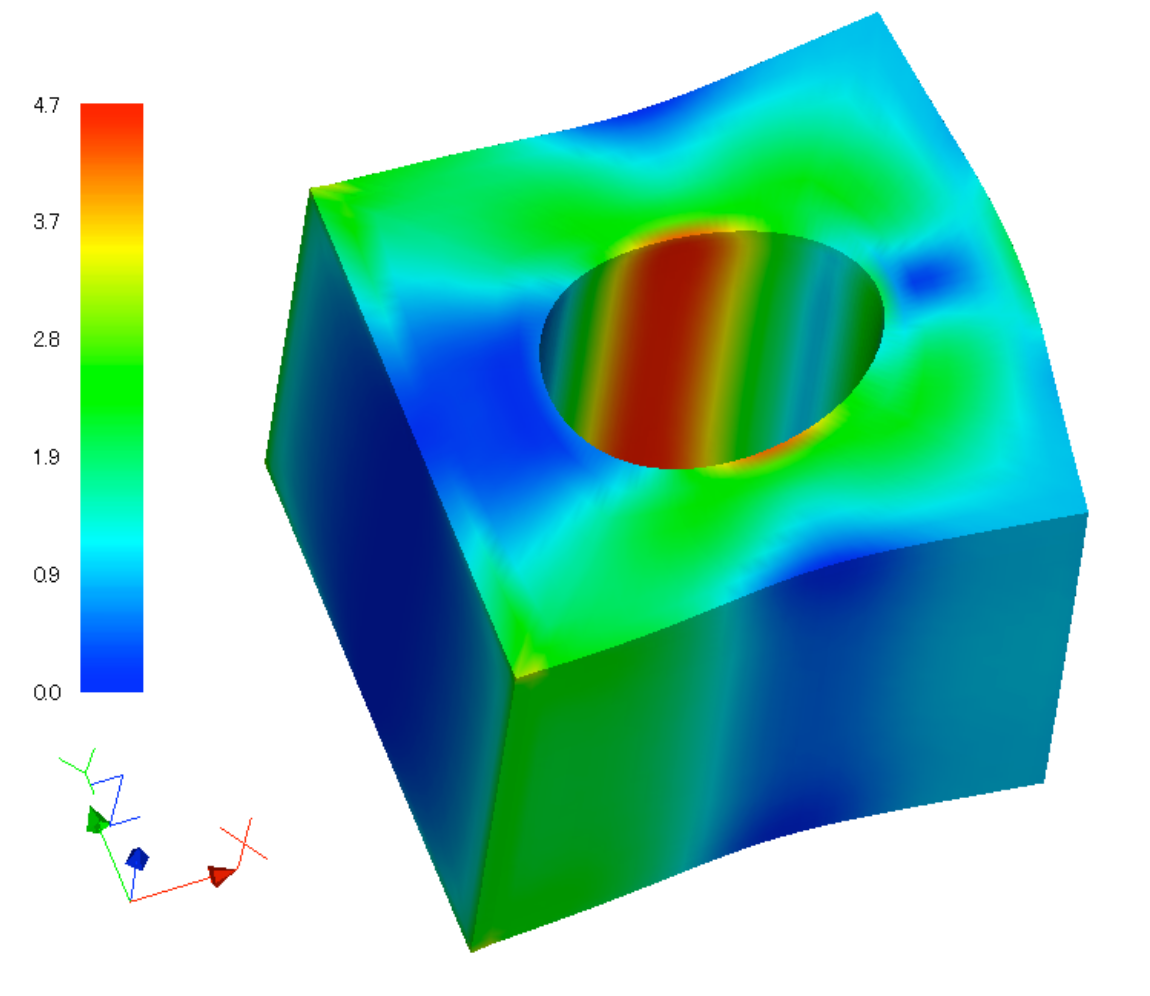
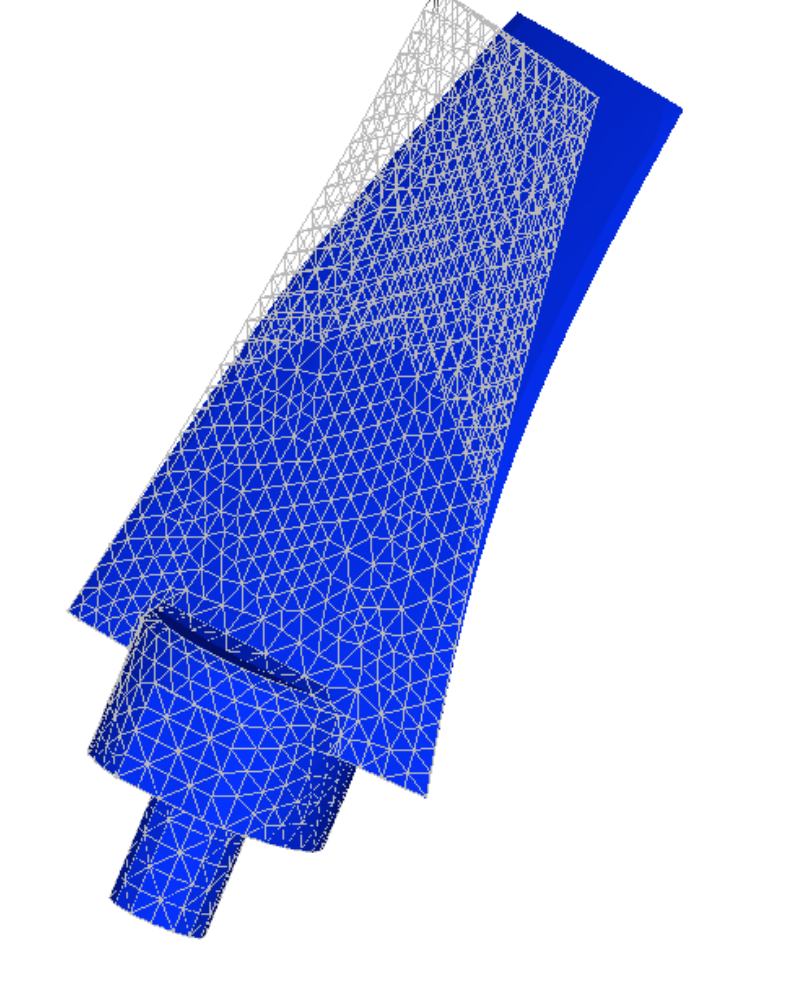
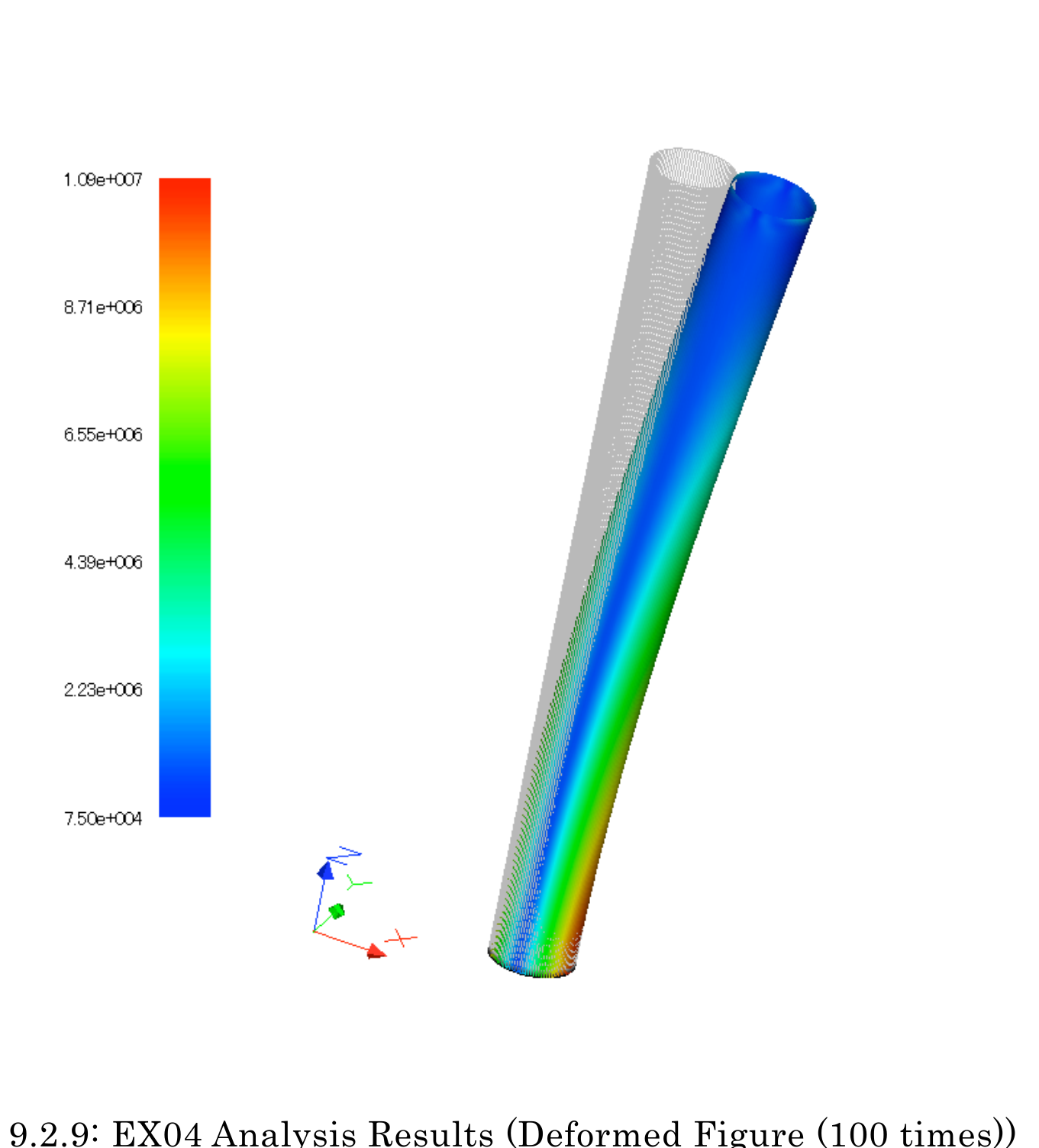
Verification Results of Analysis Performance with Example EX02
An analysis was performed with the commercial software ABAQUS using a model equivalent to the verification example model EX02 (perforated block). A comparison of the maximum and minimum values of the stress components with the results of FrontISTR is shown in Fig. 9.2.10. It can be seen that the stress components are very close to each other.
The effect of area division on stress distribution was also analyzed. The division was performed according to the RCB method, i.e., the model was halved in each of the X, Y, and Z axial directions, creating eight areas in total. Fig. 9.2.11 shows the division, while Fig. 9.2.12 shows the stress distribution of the analysis results with a single area and with the area divided into eight areas.
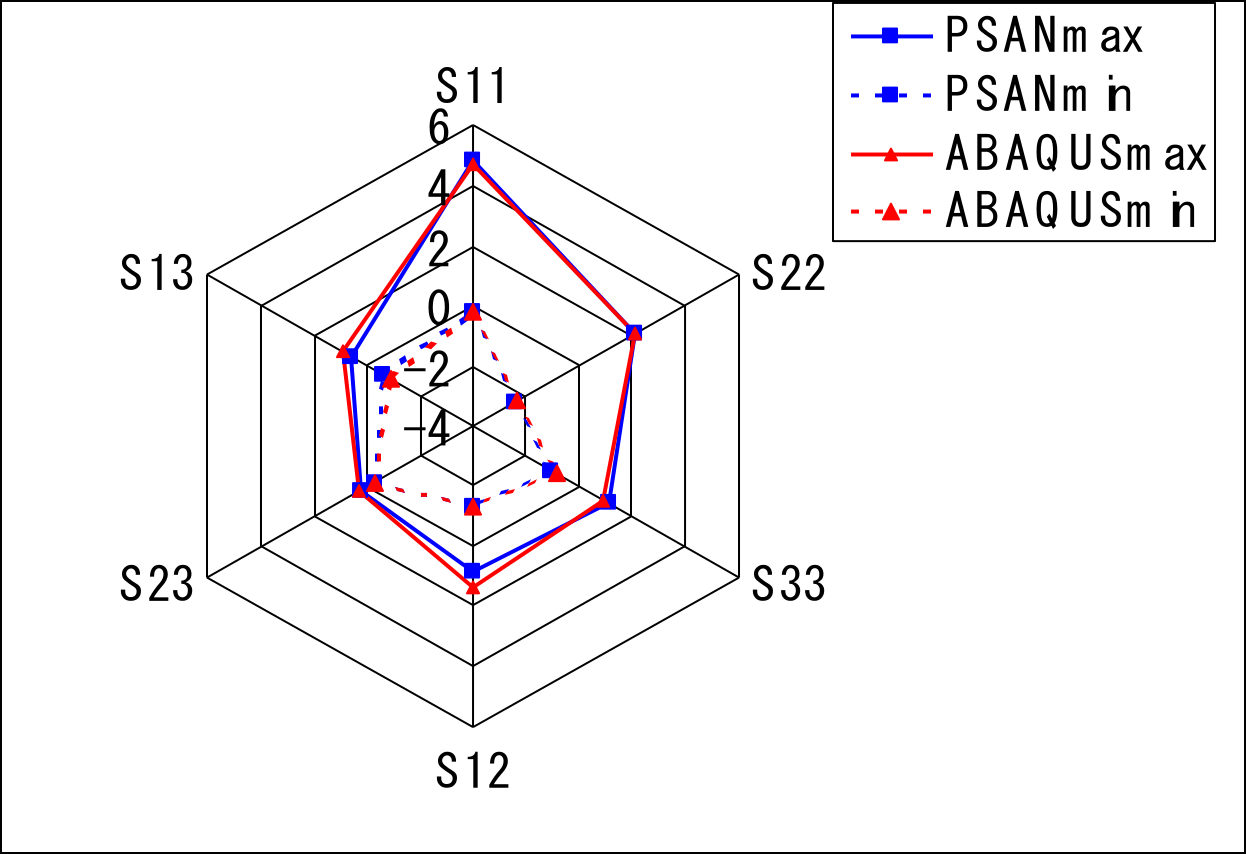
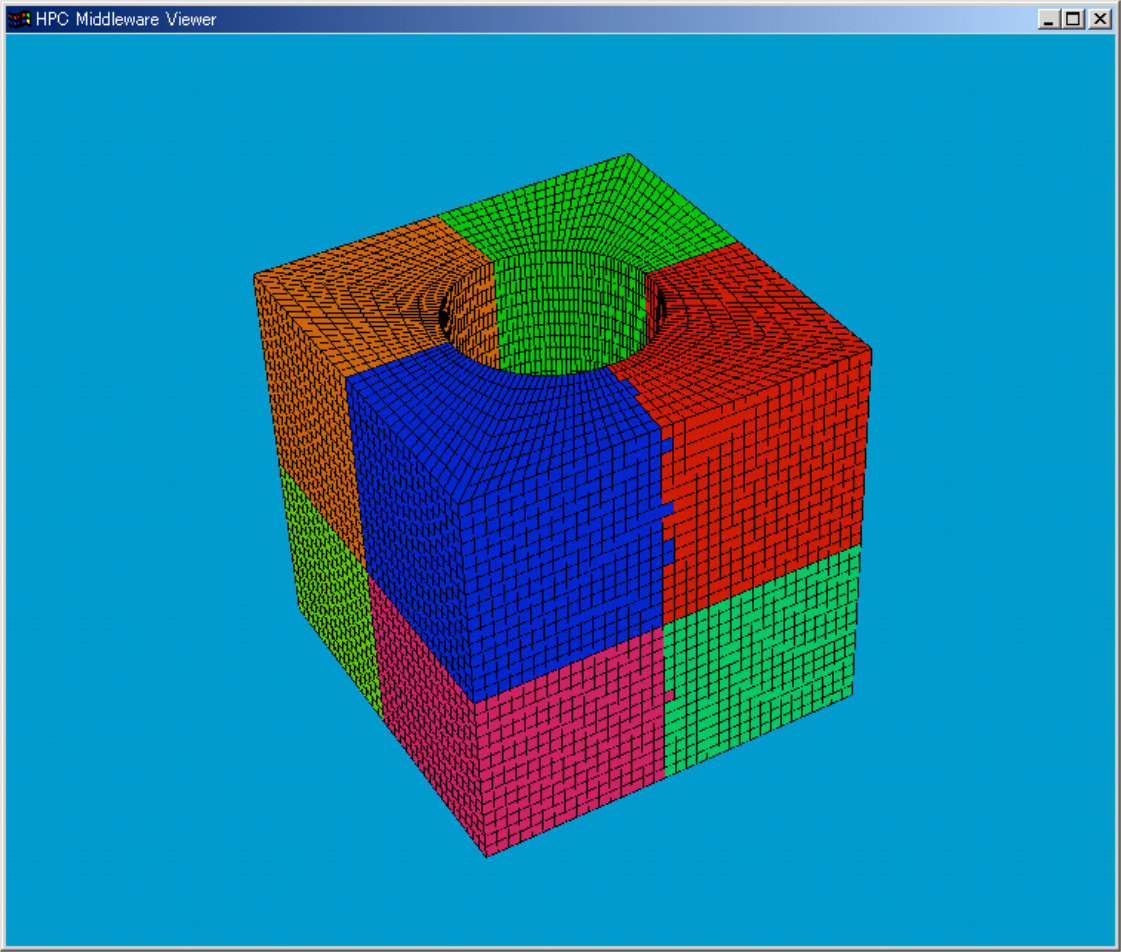
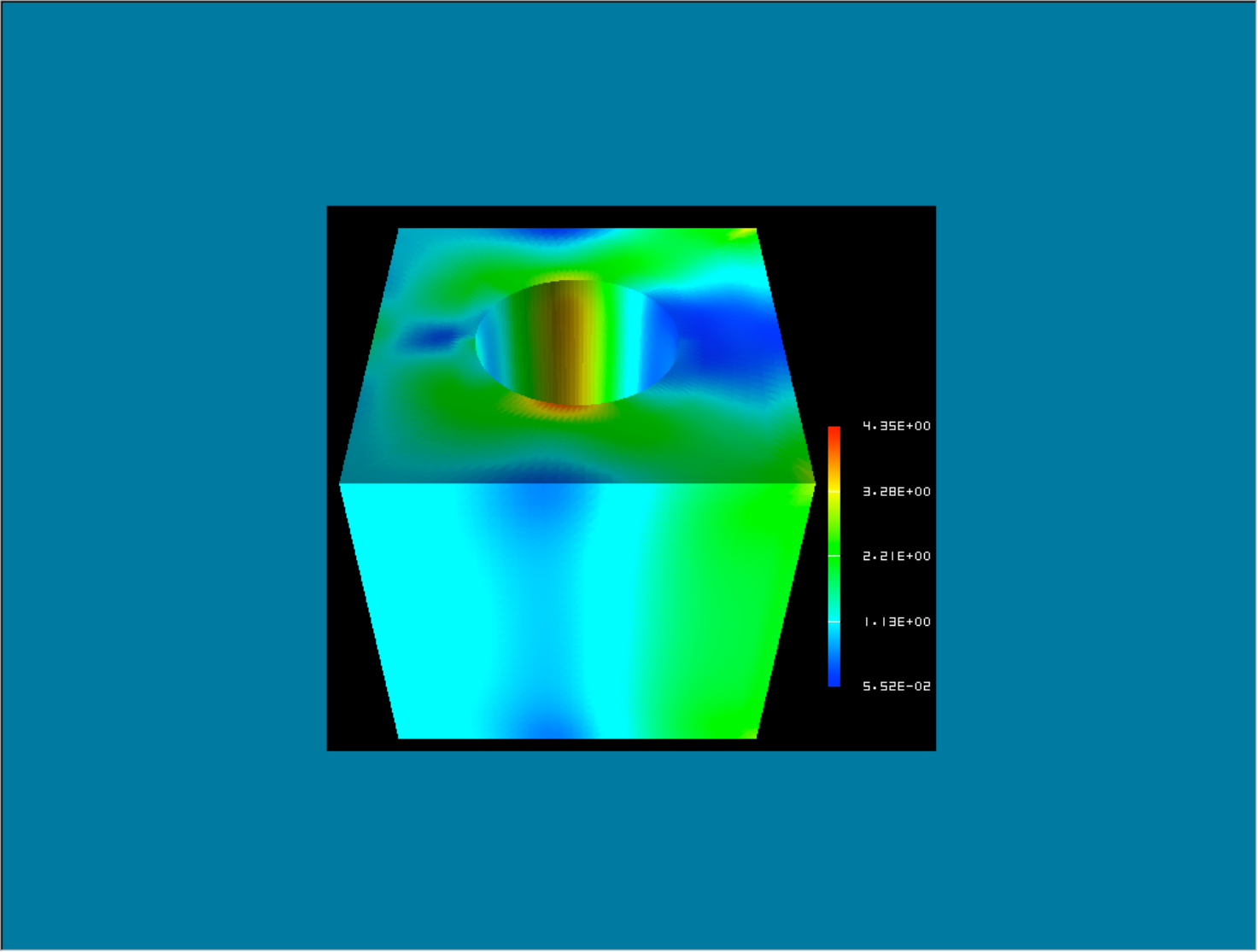
Furthermore, a comparison of the execution time with the settings of the HEC-MW solver used is presented in Table 9.2.2. Fig. 9.2.13 shows the convergence history until the solution was found.
| Solver | Execution Time(s) |
|---|---|
| CGI | 38.79 |
| CGscale | 52.75 |
| BCGS | 60.79 |
| CG8 | 6.65 |
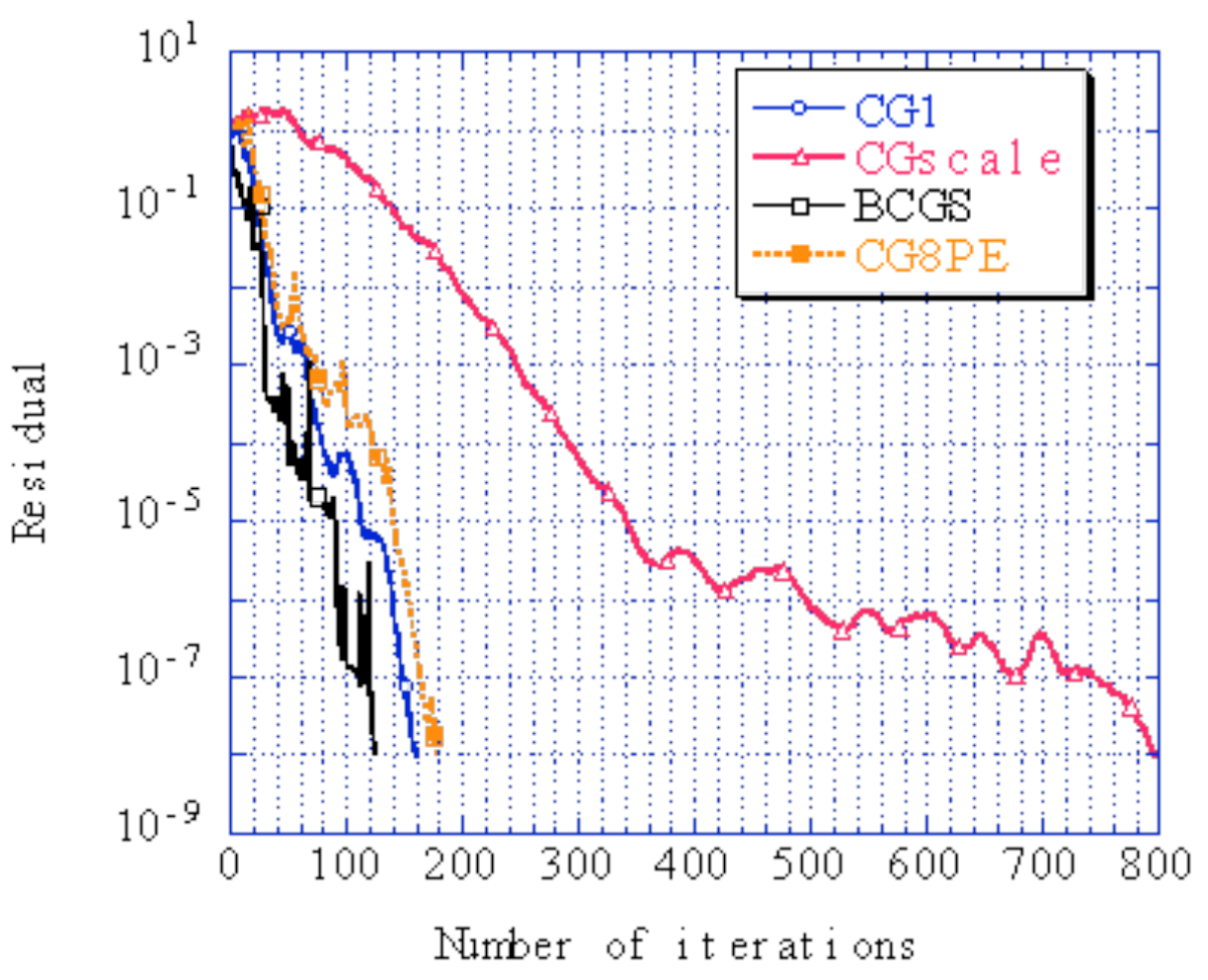
Comparison of calculation time with verification example EX01A
The increase rate of the calculation speed because of area division was verified with the example EX01A (connecting rod.) The test was conducted with a Xeon 2.8 GHz 24 node cluster computer, and the results are shown in Fig. 9.2.14. This figure shows that the calculation speed increases proportionally to the number of areas.
The difference in the calculation time because of the computer environment was also analyzed. The results are presented in Table 9.2.3.

| CPU | Frequancy [GHz] | OS | CPU Time [sec] | solver time [sec] |
|---|---|---|---|---|
| Xeon | 2.8 | Linux | 850 | 817 |
| Pentium III | 0.866 | Win2000 | 2008 | 1980 |
| Pentium M | 0.760 | WinXP | 1096 | 1070 |
| Pentium 4 | 2.0 | WinXP | 802 | 785 |
| Pentium 4 | 2.8 | WinXP | 738 | 718 |
| Celeron | 0.700 | Win2000 | 2252 | 2215 |
| Pentium 4 | 2.4 | WinXP | 830 | 804 |